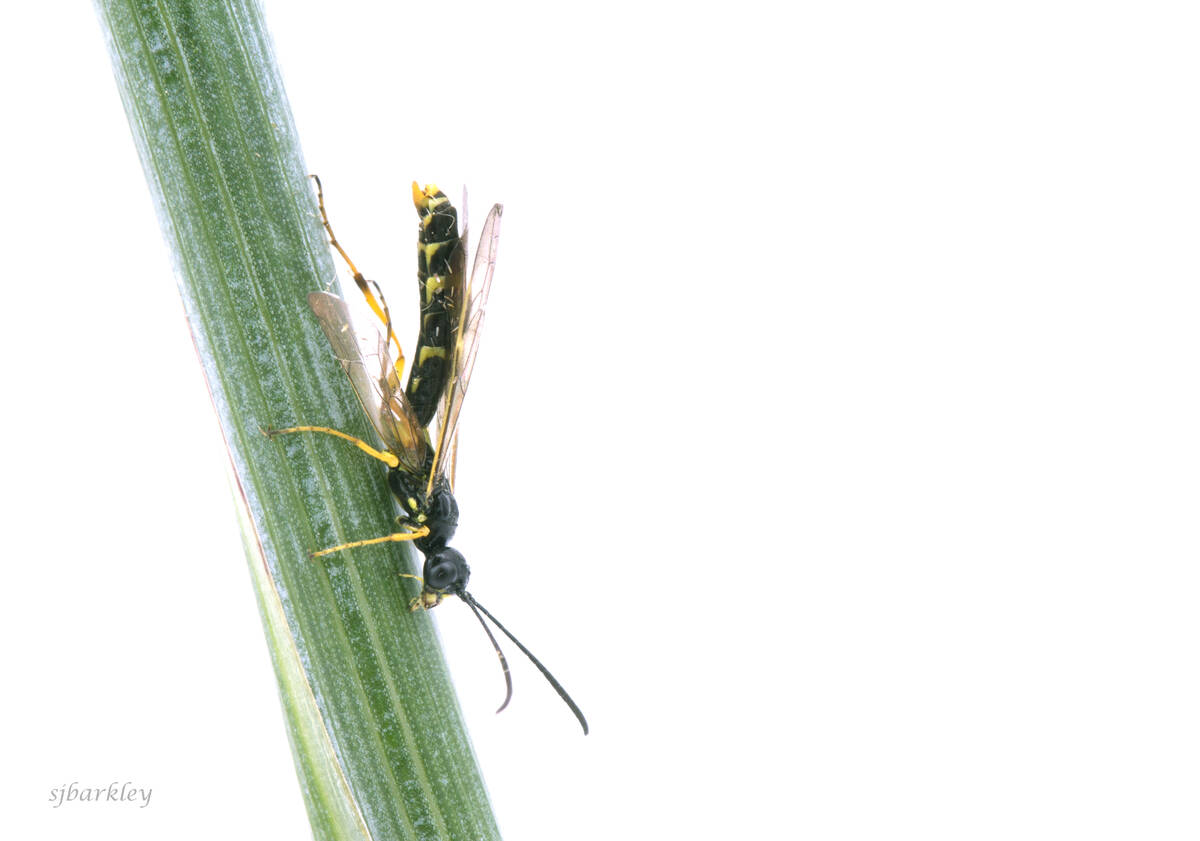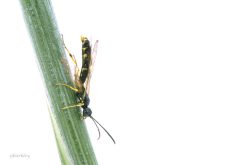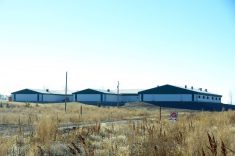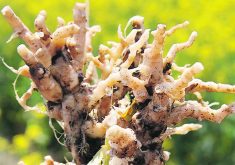af staff |pincher creek
The recent visit of the world’s most famous royal couple had most of Canada yakking, and some of the chatter was about exactly that – yak. At Pincher Creek’s Springridge Ranch, producers Russ and Melissa Friesen raise yak-cross beef, and some was served to Prince William and his new bride Kate at a dinner at Rideau Hall in Ottawa.
How the Friesens’ yak ended up on royals’ plates is a story of circumstance and luck. Edmonton-based food critic Twyla
Read Also

Wheat stem sawfly decreased across the province
Wheat stem fly damage in Alberta was down in 2025, and the outlook for 2026 looks similar.
Melissa and Russ Friesen of Springridge Ranch with their yak-cross heifers.
Campbell had discovered Springridge Ranch yak-cross beef at Horizon Meats in Calgary and loved it, and she kept in contact with the Friesens. She recently hosted a dinner party featuring the meat, and one of the guests helping to prepare the food was none other than the Governor General’s chef, Louis Chares.
“He had prepared some of our yak for this dinner party and he had really liked it. So when this (royal) dinner party visit came up, the two of them decided that they wanted to feature the yak-cross beef at that banquet,” said Russ. “I was called about two or three weeks before the event and was told that it was a possibility, but I wasn’t supposed to say anything because the menu hadn’t been finalized.”
The Friesens began working with yak in 1995 when they crossed yak bulls with Angus cows. “The females are quite fertile, but the males generally are not so they all go for meat,” said Russ.
After a lot of experimenting, the Friesens found that heifers bred to Angus or Galloway bulls produced the best results.
“We found that the Galloway was probably about the best cross with the yak and then you’ve got this one-quarter yak, three-quarters European offspring. They will grow to be almost as big as a regular bovine, but will take a lot less feed to get there,” he said.
The Friesens sell their meat off the ranch and at Horizon Foods in Calgary. Calving season is much longer – from April until December – to ensure a more regular supply of finished product to meet demand.
Natural calving
Shane and Patti Juuti of West Gimlet Farms near Rimbey, raise purebred yak and were hooked on the animal after watching a yak cow calve in 1996, after making a spontaneous purchase of one yak pair. “My daughter and I were out on the hill and watched it calve a breech birth with absolutely no problems,” said Patti.
While yaks are generally laid back, Patti says they can be fiercely protective of their calves. “Oh, they’re motherly. If you’re going to snag a baby, you better have a real good plan.”
Overall however, she says they calve more easily, require little intervention, even for winter feeding, and are easy to move.
“They’re very smart. They don’t run and take off for no reason, not knowing where they’re going. You can’t help them calve so it’s ideal for anybody who wants farm animals but doesn’t want to go out and check the calving or maybe wants to go south in the winter for a while. They’re low maintenance,” said Patti, adding that they don’t vaccinate their stock. “And they can forage like horses and trust me, we’ve had some serious weather in the last couple of years.”
Patti says yaks don’t require any special fencing and many other products can be made from these animals. “We get the hides tanned with hair on, the tail and everything. Their tails are just huge and lush. They’re like a horse’s tail, but thicker. In fact, they are the closest thing to human hair and for many years back when wigs were a big deal, they used yak hair,” said Patti, adding she also combs their fine hair, makes soap from their tallow and cures their skulls.
The Juutis’ yak meat is sold at Rimbey Foods. “This media attention is a great help for us for people to realize that they are a really good thing for people to raise and the meat is just excellent,” Patti said.
There are two species of yak – Bos mutus,the wild yak andBos grunniens,the smaller, domesticated yak. Wild yak are found throughout the Himalayan region of south-central Asia, the Tibetan Plateau as well as Mongolia and Russia. The domestic version of the animal was developed in those regions and used for milk, clothing, meat and as a packing animal. The number of wild yak is declining, and efforts began in the 1990s to try and save the formidable animals.














